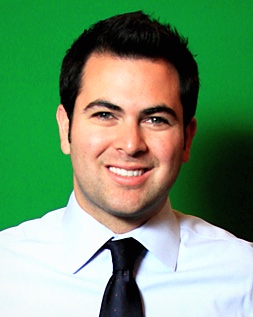The U.S. Food and Drug Administration (FDA) held Arthritis Advisory Committee Meetings, July 11-12 in Maryland, and discussed Biologics License Applications (BLA) approvals, including a submission for GP2015, Sandoz‘s proposed biosimilar product to Amgen’s drug Enbrel (etanercept).
The regulatory category “biosimilars” pertains to an abbreviated FDA licencing process for biological products that are similar to or interchangeable with a previously FDA-licensed biological product called the “reference product.” Pharmacists can substitute a biosimilar for the reference product without intervention from the prescribing health care provider. The medication is expected to produce similar clinical results in any patient at much lower costs.
Biosimilar products are different from generic drugs. Generics, called bioequivalents, are copies of brand-name drugs whose proprietary patents have expired. Biosimilars are very alike to the reference product but have allowable differences because they are made from living organisms.
 Sandoz, a subsidiary of Novartis, developed its GP2015 candidate as a biosimilar product to the licensed reference product Enbrel to treat the same indications – various forms of arthritis and psoriatic disease including rheumatoid arthritis. The company charges that although the diseases have different clinical manifestations, they share common pathophysiology such as chronic inflammation driven largely by increased levels of tumor necrosis factor-alpha (TNF-) which plays a major role in development and progression of arthritic disease.
Sandoz, a subsidiary of Novartis, developed its GP2015 candidate as a biosimilar product to the licensed reference product Enbrel to treat the same indications – various forms of arthritis and psoriatic disease including rheumatoid arthritis. The company charges that although the diseases have different clinical manifestations, they share common pathophysiology such as chronic inflammation driven largely by increased levels of tumor necrosis factor-alpha (TNF-) which plays a major role in development and progression of arthritic disease.
Enbrel received FDA approval in 1998.
During the FDA’s recent Arthritis Advisory Committee meeting, corporate and patient representatives provided data and views, orally or in writing, on topics at hand.
 Seth Ginsberg, president and co-founder of the Global Healthy Living Foundation (GHLF) and its arthritis patient support organization
Seth Ginsberg, president and co-founder of the Global Healthy Living Foundation (GHLF) and its arthritis patient support organization  CreakyJoints, a network of nearly 80,000 arthritis patients and caregivers worldwide, provided a patient perspective on biosimilars.
CreakyJoints, a network of nearly 80,000 arthritis patients and caregivers worldwide, provided a patient perspective on biosimilars.
Ginsberg, diagnosed with spondyloarthritis at age 13, helped establish GHLF and CreakyJoints at age 18 with Louis Tharp.
In his comments, Ginsberg thanked the FDA for its commitment to listening to stakeholders including patients, scientists and doctors.
“For patients, biosimilars represent hope as well as fear – hope for expanded treatment options through a broader formulary; fear of being switched from a drug that works to one they don’t know, and not participating in the promised cost reductions,” Ginsberg said. “Nevertheless, at CreakyJoints we are optimistic about biosimilars and look forward to seeing them in our therapeutic space where, through ArthritisPower, our PCORI-sponsored work as a Patient Powered Research Network, we can track patient-reported outcomes.”
Ginsberg maintains that the FDA and biosimilar manufacturers can support the effort by examining their supply chain and support services; creating unique naming and clear labeling; and making policies about switching medications for cost reasons instead of medical reasons.
Ginsberg supported Sandoz’s GP2015.
“For this particular BLA, we believe the applicant has shown exemplary effort to increase patient and physician confidence. First, they have provided clinical studies that prove safety and efficacy for two indications, rheumatoid arthritis and plaque psoriasis, surpassing the FDA requirement of just one. Second, the applicant created an assay with an extraordinarily high level of sensitivity to gauge the biosimilarity of their molecule to the reference product. In the future, we suggest more weight be given by members of this committee to the sensitivity of the assays created by applicants,” Ginsberg said.
In text accompanying its GP2015 application, Sandoz maintains its approach is not to extrapolate from one indication to another, but from one product to another by demonstrating that GP2015 and Enbrel are highly similar.
Simply, extrapolation is approving a biosimilar drug to treat the same range of disease indications as a reference biologic, based on all evidence from strict laboratory analysis and clinical studies that prove the biosimilar is similar by structure and function. While the analytical studies are extensive, much expensive and extensive clinical testing for each indication is not required.
Based on the analytical totality of evidence, Sandoz concluded that the biosimilarity of GP2015 and Enbrel has been successfully demonstrated in accordance with FDA requirements and that extrapolation to GP2015 is justified.
In his remarks to the FDA committee, Ginsberg acknowledged that biosimilars are a controversial topic in the patient community, but creating biosimilars without extrapolation is impossible. Biosimilars are needed to provide more patients with access to drugs at lower costs. Ginsberg added that science is only part of biosimilar success – patient use and satisfaction is where the success of biosimilar products will ultimately be measured.


